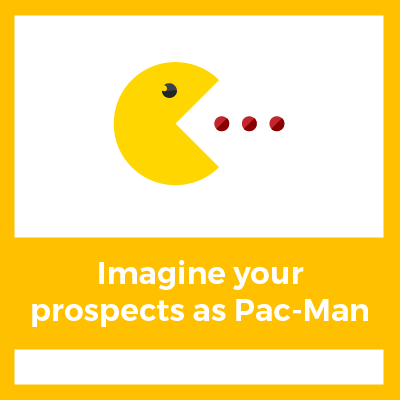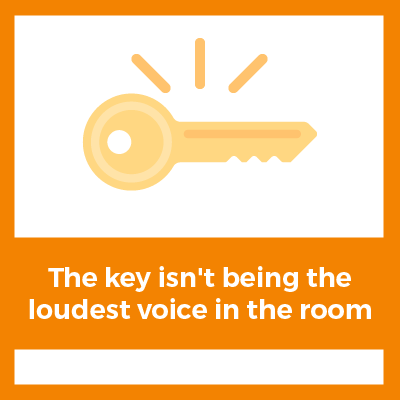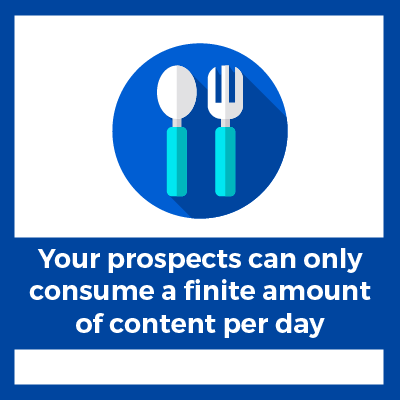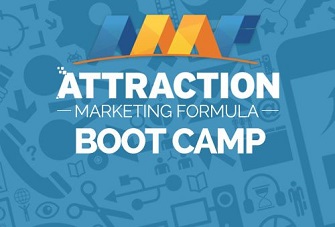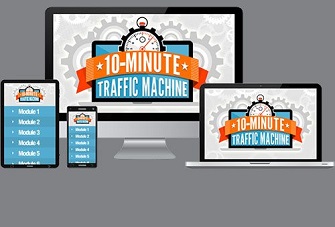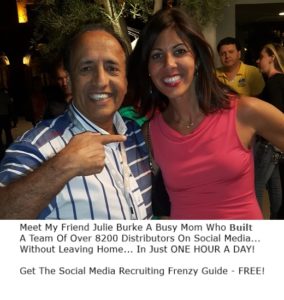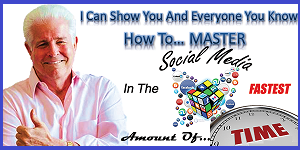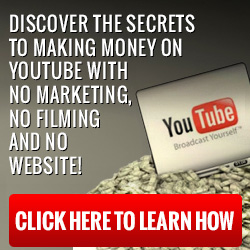On my blog my aim is to constantly bring value to Network Marketers and Entrepreneurs looking to build their business faster using the Internet. I have a policy of publishing articles from authors I value and respect. Today’s guest blog post is from my good friend Andrew Draughon giving 3 tips to keep your audience engaged.
Ever play Pac-Man as a kid?
You know, the yellow blob that eats every li’l niblet in sight, all while avoiding those pesky ghosts?
It’s a cornerstone of ’80s pop culture, and also an apt metaphor for the hostile landscape marketers have to deal with when it comes to their content.
Imagine your prospects as Pac-Man.
Hear me out.
Every direction they turn, there are ‘shady’ marketers chasing them and seemingly infinite “dots” of information—an email here, a blog post there, and a social media update in-between.
They’re gobbling up as much content as they can possibly stand.
And unlike Pac-Man, whose appetite is a-MAZE-ing (excuse the pun), your prospects will quickly reach the point of info-overload where they assume everyone is haunting them with malintent.
Honestly…
Think about how much information you get bombarded with on a daily basis!
It’s exhausting.
Meanwhile, your social feeds are brimming with “breaking” news, viral videos, and just about everything in between.
But, like it or not, it’s the lay of the land.
Information everywhere, all the time.
Now, this constant flood of content presents a huge roadblock for online marketers.
Your prospects are so overloaded with information that most of the time they’re going to lose interest, get distracted, and smash the “Back” button long before they finish reading or watching whatever they clicked on.
And for marketers like you and me, that means “game over.”
So, how do you ensure that your content actually gets consumed over the thousands of other things fighting over your prospects’ precious attention?
And most importantly…
Are your letting your content go to waste?
Here’s some food for thought:
Your prospects can only consume a finite amount of content per day.
As much the clock or their attention span’s will allow.
And you want to be part of that small percentage that gets gobbled up, rather than left behind.
Doing so is actually easier than you might think.
Despite popular belief, the key to fighting the epidemic of information overload isn’t being the loudest voice in the room—
Far from it, in fact.
It’s about leading your readers from “Point A” to “Point B”
Many marketers make the mistake of trying to pull a bait-and-switch on their prospects to grab their attention.
But serving up clickbait and empty promises won’t get your content consumed…
That’ll only label you as a spammer.
Instead, what you must do is craft content that caters to today’s microscopic attention spans.
Here’s the deal:
The human mind makes decisions in a matter of milliseconds, so you have to write your copy and video scripts with info-overload in mind.
Luckily, there are three easy content crafting tricks you can use to reel in your readers and keep them hooked.
Think of the following as a sort of “cheat sheet” to beating today’s gnat-like attention spans.
So if you want your prospects to act like Pac-Man—always hungry for your content—follow these three steps every single time you create content.

I can’t tell you how many times I’ve seen people screw this up even though it’s so basic (yet so easy to overlook).
Here’s the deal:
You can’t squander your real estate “above the fold.”
When I say “above the fold,” I mean anything that you reader sees immediately on the page without doing any scrolling.
So, for a blog post or email, we’re talking about the images and copy that appear immediately following your headline.
The mistake that many marketers make in their opening lines is parroting their headline or making a generic claim that doesn’t do anything to compel readers to continue reading or watching.
For instance…
If I write a post titled “3 Foolproof Ways to Drive Traffic to Your Blog,” how am I going to command your attention with my opening statement?
Am I going to ask you some fluffy question like “Don’t you wish you had more traffic?”
Or am I going to slap you with a giant featured image that repeats the exact same text of my headline?
Probably not, right?
That would be redundant.
You only have five lines max to realistically grab your readers’ attention
So rather than repeat yourself (with a headline, featured image, and opening lines essentially saying the exact same thing), mix things up.
Create some curiosity.
Tell a story.
Hit your readers with some sort of shocking statistic.
Stop them in their tracks so they can’t help but read more.
Notice how I started this piece off with Pac-Man, instead of some generic statement about the importance of content you’ve probably heard before?
There’s an old copywriting “golden rule” that states that the purpose of the first sentence of any piece of copy is to lead readers to the second sentence.
And the purpose of the second sentence is to get to the third.
And so on.
That’s how you need to treat your content above the fold.
Because once you’ve gotten them past those first few lines, chances are your readers will be hooked.
It’s the same with your videos too—you’ve got to get them past the 6-second “hump.”

Now, it’s crucial that your content continues to deliver beyond those first few lines.
Yet many marketers lose their readers’ momentum because they assume a strong hook is enough to sell an entire piece of copy.
Sadly that’s not the case.
Remember: people today are insanely busy.
Your content needs to pack a punch, but it also needs to be friendly to people who are pressed for time.
Think about readers scrolling through your content on their smartphone, or someone who wound up on your email or blog post during their lunch hour.
The harsh reality is that most people aren’t going to give your content their full attention.
Readers today are serial scanners
In response, you need to format your content to be friendly to someone hastily scanning the page.
Notice how none of the blog posts here at EMP contain giant walls of text?
Also notice how we try to break our content with graphics?
Beyond giving your readers something to look at beyond text…
People will spend exponentially more time on a piece of content with images versus one without them.
If nothing else, including images within your blog posts is a great way to stick to the principle of “Show, don’t tell.”
After all, if you’re writing a post about amazing ad examples, wouldn’t it make sense to actually show them off in your content?
That’s exactly what I did in this post about six proven ad templates, pulling from the likes of Pinterest and YouTube to illustrate the key points.
Without such imagery, the post would leave a lot to be desired.
You can go far beyond the realm of stock photos, too.
These days you can embed lots of media…
- Facebook, Tumblr, and Twitter posts
- YouTube videos
- Pintrest graphics or GIFs
- Images you create yourself using Canva or similar, etc.
As long as you have an image to break things up every few hundred words, you’re good to go.
And not to burst your bubble, make sure that you tread lightly when it comes to which images you use in your content.
Just because you found something on Google doesn’t mean that it’s fair game for your content!
That’s why we recommend either embedding posts or using your own images and screenshots whenever possible.
But hey, I’m a marketer, not a lawyer!
Note this principle applies equally (yet in reverse) to videos.
Video is a visual medium, so adding text by way of captions drastically improves watchability and view duration.

This last trick goes hand-in-hand with using images because it’s so important that you break up your content, especially for your mobile readers.
If you’re stuck on a small screen, there’s nothing more daunting than seeing clunky paragraph after clunky paragraph.
Subheaders are about much more than just formatting, though.
Why do you think listicle articles (not unlike this one) are so popular?
Lists are arguably the most scan-friendly type of content you could create (and also one of the most popular types of video content too).
With a well-crafted listicle, you can go straight from the headline to the subheaders and get the gist of what the author is trying to say (equally applies to video via using title cards).
In fact, this is how a lot of your readers operate nowadays.
So if your subheads stink, or if they’re not there at all, your content is sunk
Oh, and subheaders don’t have to be presented like a laundry list.
You can use quotations and questions as subheaders, just as I did in this guide to effective prospecting.
Or you could pull quotes directly from your content that pack a punch in order to whet the appetite of your reader, like I did in the above.
Sometimes something totally unexpected can do the trick, too.
Remember that quote from earlier about the purpose of the first sentence being to get to the second, and so on?
Apply those same rules to your subheaders.
Just like headlines…
Their function is to grab the attention of your readers
Since the rule of thumb is to insert a subheader or fragment every 300 words, there’s plenty of room to get creative.
But I’ll wrap these tips up with something that I’ve noted in the past:
Creativity is often overrated when it comes to crafting content.
Honestly, focusing on these tricks will put you way ahead of the game when it comes to the readability of your content.
- Create an immediate connection.
- Make them want to scroll.
- Lead them to the end and then keep them coming back for more.
Keep ’em hungry.
You know, like Pac-Man.
It’s really that simple.
Is your content getting consumed?
These tips can be applied to every piece of content you create, time and time again.
Improving the readability or watchability of your work means more interested readers, more time spent on the page, and more engagement with your content.
And again, this applies to emails, blog posts, video, ads, all of it.
Regardless of your content strategy, consumption is everything when it comes to conversions.
…you know, the part where you turn your audience into customers.
But, the most important part of your content strategy is getting eyes on the page.
Because without an audience, none of this matters.
Which means you need traffic.
Thankfully…
Getting eyes on your content doesn’t have to be a headache!
In fact, I’d like to invite you to check out a step-by-step tutorial that reveals our exact advertising process in a 100% FREE online workshop, hosted by none other than Tim Erway, our co-founder and CEO here at Elite Marketing Pro, who’s responsible for generating over 30 million dollars in revenue online (and counting).
Simply pick a time and register right here.
You’ll discover how you can put together a profitable ad campaign in just 10 minutes a day with as little as $10 in initial ad spend.
In fact…
We’ve used the exact formula to turn a $10 test campaign into $141,246.30 in sales.
And Tim will show exactly how we did it.
So if you haven’t registered yet, what are you waiting for?
Pick a time that works for you to attend Tim’s traffic workshop right here.
Until next time,
 Moni Arora’s Blog
Moni Arora’s Blog
Facebook
Linkedin
Twitter
Email Me
P.S. If you found value in this blog post please LIKE, COMMENT and SHARE with someone who can benefit from this.
Featured Services To Boost Your Business
Are You A Network
Marketer?
Free 10-Day Online Recruiting Course Shows You How to Recruit – Rejection Free!
Click Here To Learn More!
Learn How To Recruit
Using Social Media!
Create A Massive Recruiting Surge In Your Business With Social Media…
Click Here To Learn More
Do You Want More
Traffic & Leads?


